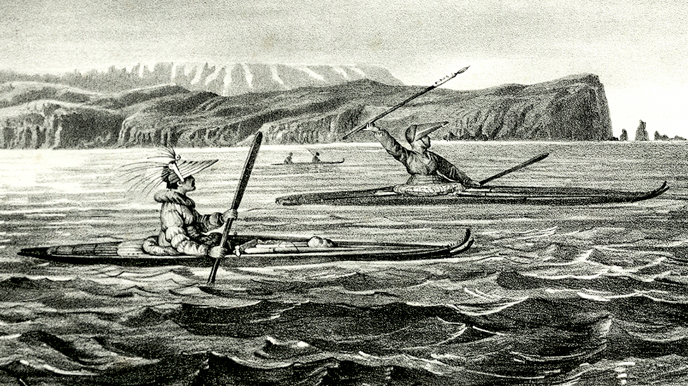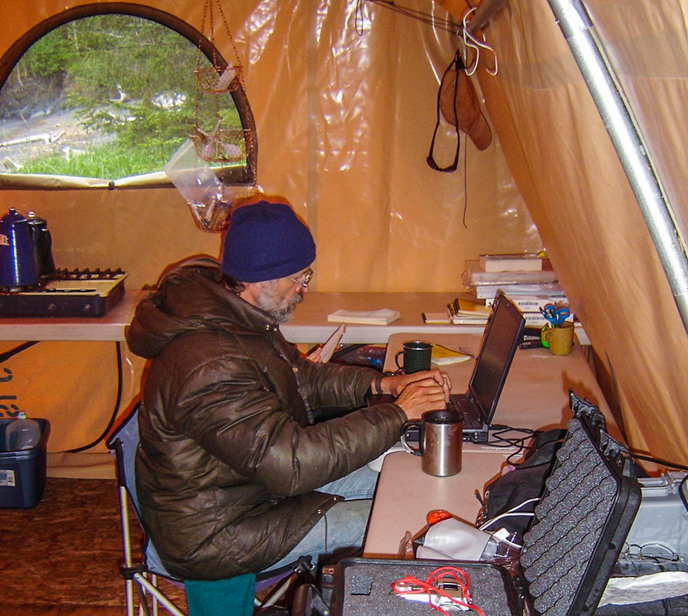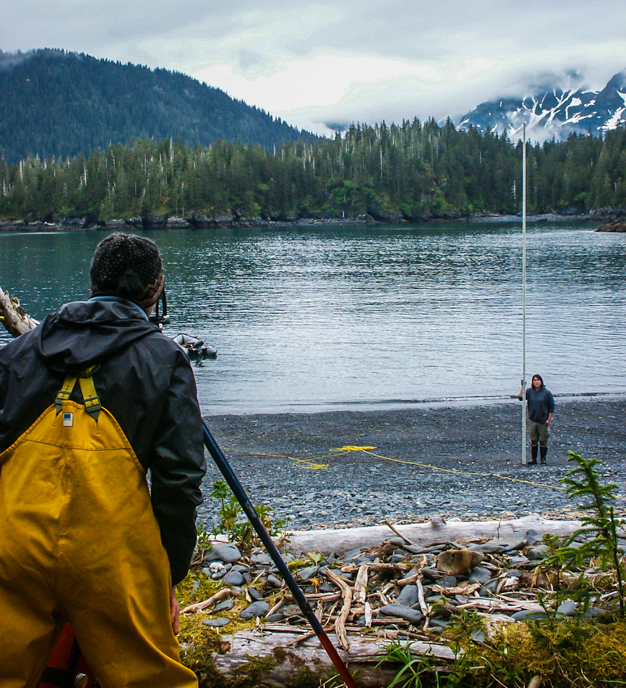The same storms and waves that carve the beautiful sea stacks and caves of the Kenai Fjords National Park coastline threaten to erase the archaeological history of this place. This Summer, the National Park Service and The Smithsonian Institution’s Arctic Studies Center are partnering in an ongoing effort to locate and scientifically document archeological sites along the coast of Kenai Fjords National Park (KEFJ), specifically focusing on those sites at risk of being lost or permanently damaged by the erosional forces of the Kenai Fjords coast. All field activities will be led by Principle Investigator and Smithsonian Institution Archaeologist, Dr. Aron Crowell and assisted by me, National Park Service representative and KEFJ Archeologist, Jon Hardes. Dr. Crowell has conducted well over 20 years of archaeological and ethnographic field research in the Park andh is numerous publications serve as the foundation for our understanding of the archeology and past Native Sugpiaq (maritime Alutiiq peoples living in south and southwest Alaska) lifeways in Kenai Fjords National Park and beyond.

Native Sugipaq hunters paddling the rocky southwest coast of Alaska. Illustration//Smithsonian Institution
After many months of careful logistical planning, consultation and gathering of all the necessary permits (including a Scientific Research and Collecting Permit, an Archaeological Resources Protection Permit, a State of Alaska Archeological Permit and an Artifact Curation Permit), Dr. Crowell and myself, along with researchers from the University of Alaska, Fairbanks (UAF) and students from the Sugpiaq communities of Nanwalek and Port Graham, are excited to hit the ground in mid-July. We will spend 10 days conducting field documentation of these important sites. The 53’ Park vessel M/V Serac will serve as our floating basecamp, providing on-board living accomodations (eating, sleeping, and bathing) as well as a warm/dry space for the temporary curation of artifacts and initial lab work to be conducted.

Dr. Crowell examining archaeological field data in a field camp along the Kenai Fjords coast. Photo//NPS
Field investigations will focus on surveying for new sites as well as further recordation of some 20 known sites, most of which are at risk from active coastal erosion. Specific tasks include: precision spatial GPS mapping of previously discovered sites; examining shoreline segments where archeological surveys have not been previously conducted or were insufficient to check for undiscovered sites; coordinating with UAF researchers to map past glacial limits and develop a relative sea level history that will apply to our understanding of site preservation; and documenting erosional damage and any other factors (e.g. potential vandalism) that may be threatening these irreplaceable archeological resources.

Researchers mapping a remote coastal beach containing archaeological artifacts. Photo//NPS
This summer’s research will contribute greatly to our scientific understanding of ancestral Sugpiaq maritime adaptations and settlement patterns. It will also assist me and other Kenai Fjords National Park cultural resources staff in developing a cultural resource inventory and management plan for our coastal lands.
